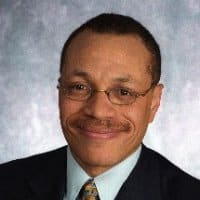
First Presbyterian Church of Stamford, Conn., is a historic church landmark, founded in 1853. To accommodate growth, the congregation’s new Modern structure was built on 11 acres of rolling and wooded land at the edge of downtown Stamford in 1952.
Since then, the church has been called the Fish Church because of its shape. (It will be on tour. Oct. 5 is DoCoMoMo Tour Day for the International Committee for the Documentation and Conservation of Buildings, Sites, and Neighborhoods of the Modern Movement — DoCoMoMo, for short).
The Fish Church is multi-cultural. In addition to traditional old-line church members, there are African Americans, a good portion of folks who are from East Asia, Pakistani, Indian descent, Arab nations, and Africa.
But like many churches, it was facing a decline in its population and has run into some challenging financial times. They needed money for:
- Deferred maintenance issues
- Sorting out the finances of the church
- Continuing their mission work
- Helping the local community
- Bringing in new members
What they chose to do was to think outside the box. After a long process, they decided to unlock the value in some of their land by partnering with a developer to create a residential apartment complex. The money could then be used to serve the church’s financial needs.
The challenge has been two-fold:
- Finding somebody with the right mindset and vision to see how this can work – someone who can design a structure that will complement the existing church.
- Getting the folks within the church to agree to the plan.
We had discovery meetings where we would talk about the overall concept to get everybody on board. The next step was to work with the Presbytery who actually holds trust for the land. Finally, the developer unveiled the actual plans, and the overwhelming response has been “wow, you guys have done a really nice job.”
After 15 months, the developer filed the plans with the building department.
There are two clear lessons others facing similar challenges may appreciate:
- We spent time brainstorming options. We balanced what the experience would be for the future with the income that might come from this venture. We were able to maximize the land — to view it like a legacy fund or an endowment that is going to be professionally managed like other endowment funds the church has.
- This model can work really well in a number of places. Lots of non-profit organizations may have land that they may not consider an asset. Churches, schools, old monasteries or nunneries may be on property that borders woods or something else they haven’t used before. Even though it is beyond their immediate structure, there’s still value in what they cannot see.
At the end of the day, it will be a win-win for everyone. That’s what a long-term partnership should be able to do for an organization, to help it maximize value out of what it may not see: to make something out of nothing.
Are you seeing this kind of cutting edge thinking and new initiatives in your communities? Please share your stories and ideas to meet the challenges our young people are presently facing in today’s demanding world.
203-461-8711

